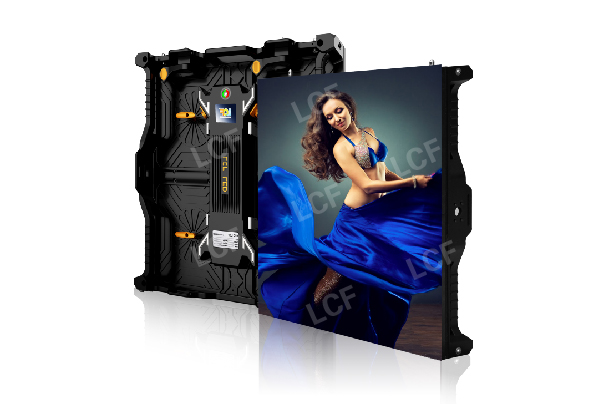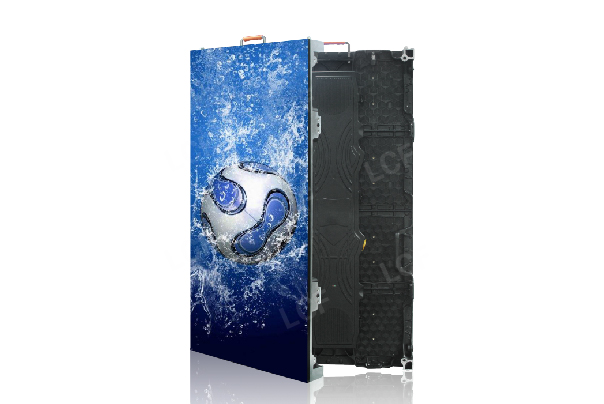Publisher: Supplier of LED Display Time: 2018-07-03 Views: 4772

Upgrading the old screen will face a new choice, the quality of the screen, the reputation of the manufacturer, the service quality of the manufacturer and the case of the manufacturer. The case mainly depends on the maturity of the outdoor high-definition screen made by this manufacturer. If there is no mature case, no one wants to be the first person to eat crabs. After all, what kind of problems and troubles the old screen once brought to them is clear in their hearts.
Xiao Bian will not talk about technical parameters here today. First, if you often pay attention to our platform, you will have to increase your knowledge. Secondly, more people are already very professional, and there is a saying that can also be used here, "a long illness becomes a doctor". To put it nicely, practice makes perfect, so technology is not the focus here today, we are more about how to change the old screen into a suitable model.
In the past ten years, the specifications used for LED displays are relatively conventional. The outdoor LED displays with higher frequency of purchase and use are nothing more than P16 and P10. The frequency of purchase and use of other P12, P14, P20, etc. is already very low. In addition to the large ones that use P20, P25 and even larger spacing on the top of high-rise buildings, those on the top of high-rise buildings are almost used for ultra-long-distance viewing, and it is a waste to replace them with high-definition, of course, except for local tyrants.

We describe the upgrade and transformation plan from the following three aspects.
1. Model (ie point spacing, P)
The old screen in the past does not mean that you can change it to whatever model you want. Usually, the main size of the steel structure has been determined by the model of our LED display screen, and the steel structure can hardly be modified. The risk to the overall security of the display screen is immeasurable. In other words, it means that the steel structure determines what model of high-definition LED display we choose to upgrade to.
When the manufacturer designs the steel structure, the fixed box size is generally determined according to the horizontal spacing of the display screen. For example, using a P16 display screen, the length (width) of the module is 256mm, then the length (width) of the box design is 768mm or 1024mm, so the result is that the square-to-pass spacing of the fixed box is 768mm or 1024mm.
Then the corresponding modules are P8 and P4. Generally, the horizontal length (width) of the module designed by the manufacturer is 256mm, which just corresponds to the size of the P16 module, so the designed box size can be the same. Similarly, the fixed square-pass spacing on the steel structure also corresponds exactly. In terms of density, the density of the P8 specification per square meter has been increased by four times, that is, 15625 points/square meter. The density per square meter of the specifications of P4 has been increased sixteen times, that is, 62,500 points/square meter.
If it is a large LED screen of P16 about 8 meters x 5 meters and about 40 square meters, in the past, when the computer resolution was 1024X768, the window only took up a quarter of the display. After switching to P8, it is basically full screen.
Let's take a look at the display screen of P10. The length (width) of the module is 320mm or 160mm, then the length (width) of the box design is 960mm, so the result is that the square-to-pass spacing of the fixed box is 960mm.
Then the corresponding module is P5. Generally, the horizontal length (width) of the module designed by the manufacturer is 160mm, which just corresponds to the size of the P10 module. Then the designed box size corresponds to the fixed square-pass spacing on the steel structure. . In terms of density, the density of P5 specifications per square meter has been increased by four times, that is, 40,000 points/square meter.
If it is a large LED screen of P10 about 5 meters x 3 meters and 15 square meters, in the past, when the computer resolution was 1024X768, the window only took up a quarter of the display.
2. Electricity
Upgrading the P16 LED display to the P8 display, the power consumption is almost the same. In the past, the maximum power consumption of the static P16 display was about 800W/㎡, and now the maximum power consumption of the 4-scan P8 display is about 750W/㎡. If the energy-saving solution is used, the power consumption will be reduced by about 20%, but the main electric box must be replaced as a whole, because the electrical equipment such as air switches and AC contactors also have the number of times and lifespans, which cannot be lost because of smallness. It was also mentioned in the previous article on distribution boxes.
If it is upgraded to a P4 display, the maximum power consumption is nearly double that of the P16, and the power consumption is about 1400W/㎡. If the energy-saving solution is used, the power consumption will be reduced by about 20%, then the original main cables must be replaced, and the capacity of the transformer with small capacity needs to be increased.
When upgrading the P10 LED display to the P5 display, the maximum power consumption of the P5 is twice that of the P16. Similarly, if the energy-saving solution is used, the power consumption will be reduced by about 20%, so the original main cables must be replaced, and the capacity of the transformer with small capacity needs to be increased.
3. System and signal transmission part
If you are used to the original system, you can use the original system. If you change to another system, you need to adapt and learn again. The system itself has no effect on the display screen upgrade, but if the resolution of the LED screen exceeds 1920X1080, whether it is the horizontal width or the vertical height, a video splicing processor must be added for splicing and use. Generally, manufacturers will propose corresponding solutions. This is just a reminder. Including the signal transmission part, a network cable has about 650,000 pixels, which is calculated according to the accumulation of the whole screen. If it is not enough, the number of network cables must be increased.
At present, there are a few system manufacturers that can provide video playback processors without wiring, just by enabling the player to access the Internet, the display can be remotely controlled.
In the end, the editor still has to return to the issue of steel structures and re-emphasize that the design requirements of steel structure design and construction drawings stipulate that the service life of steel structures is only five to ten years, especially for column-type structures, the risk will be even greater. . Then the problem comes again. Many outdoor LED display steel structures have not been reviewed and constructed by the design institute, so the reliability of the steel structure cannot be guaranteed in terms of years. If it’s not bad, then it will be replaced as a whole, and the big screen has been spent, is it still a little bit worse? To avoid irreparable consequences in order to save a little cost. Well, I hope this article is of some use to you.